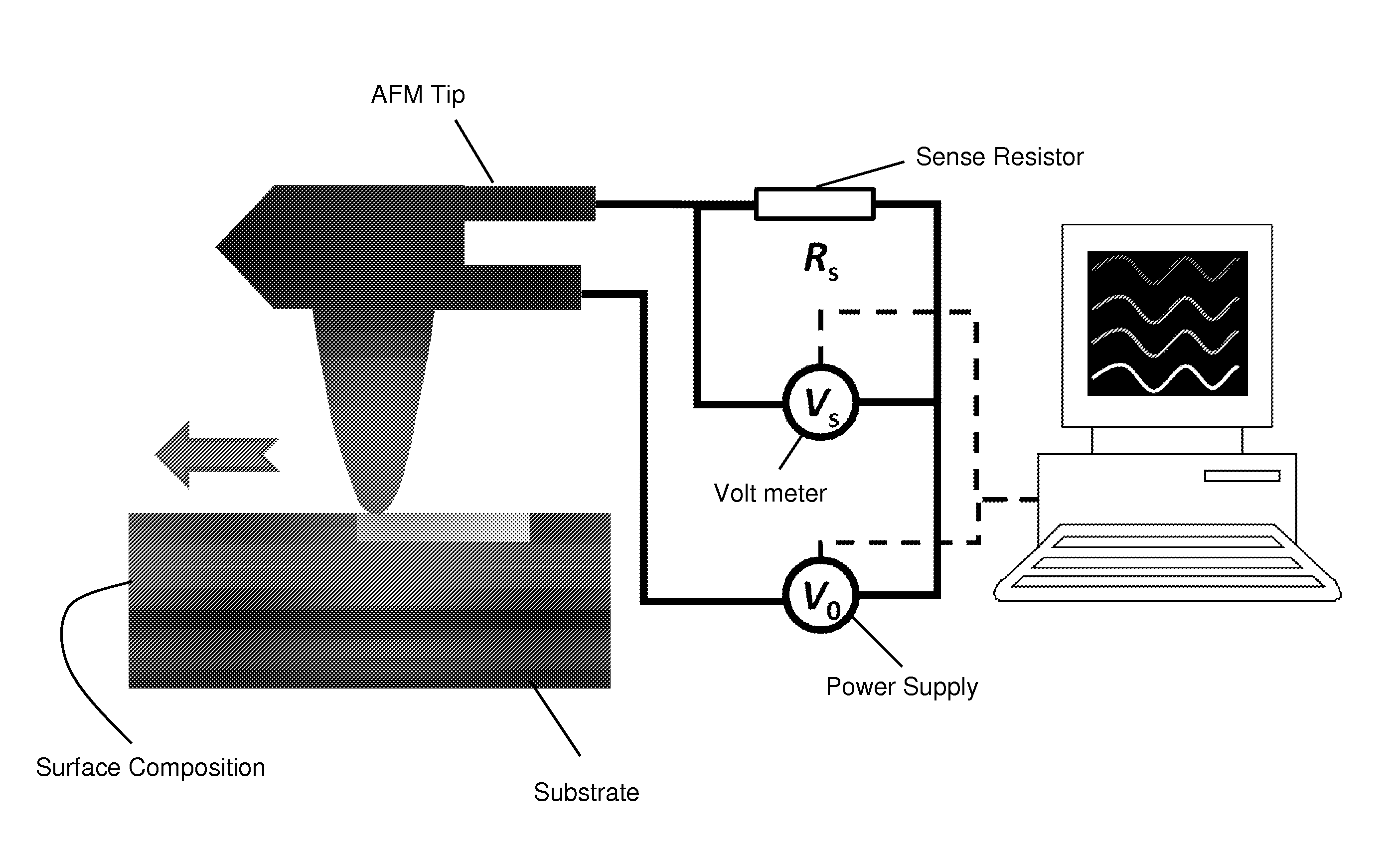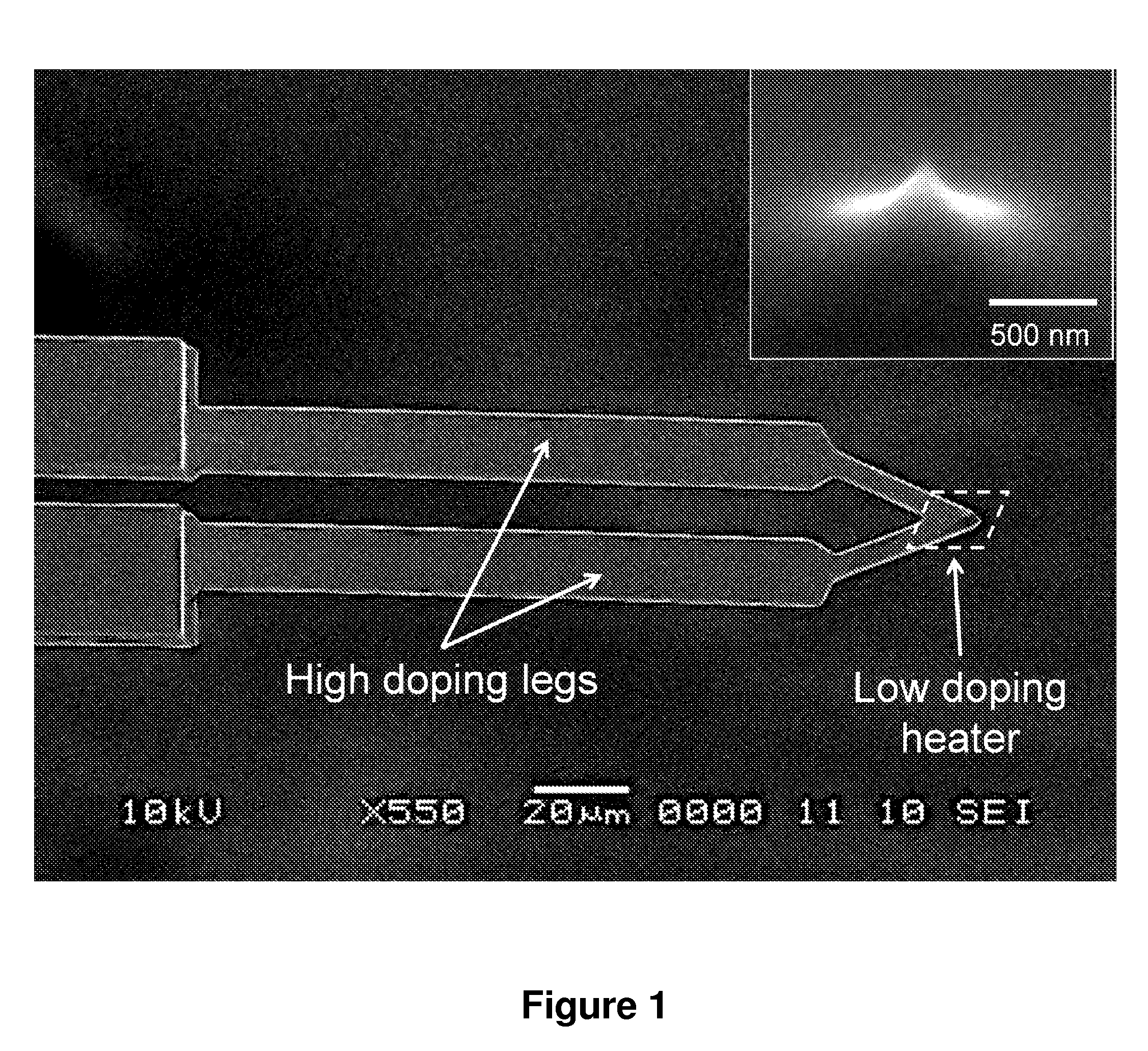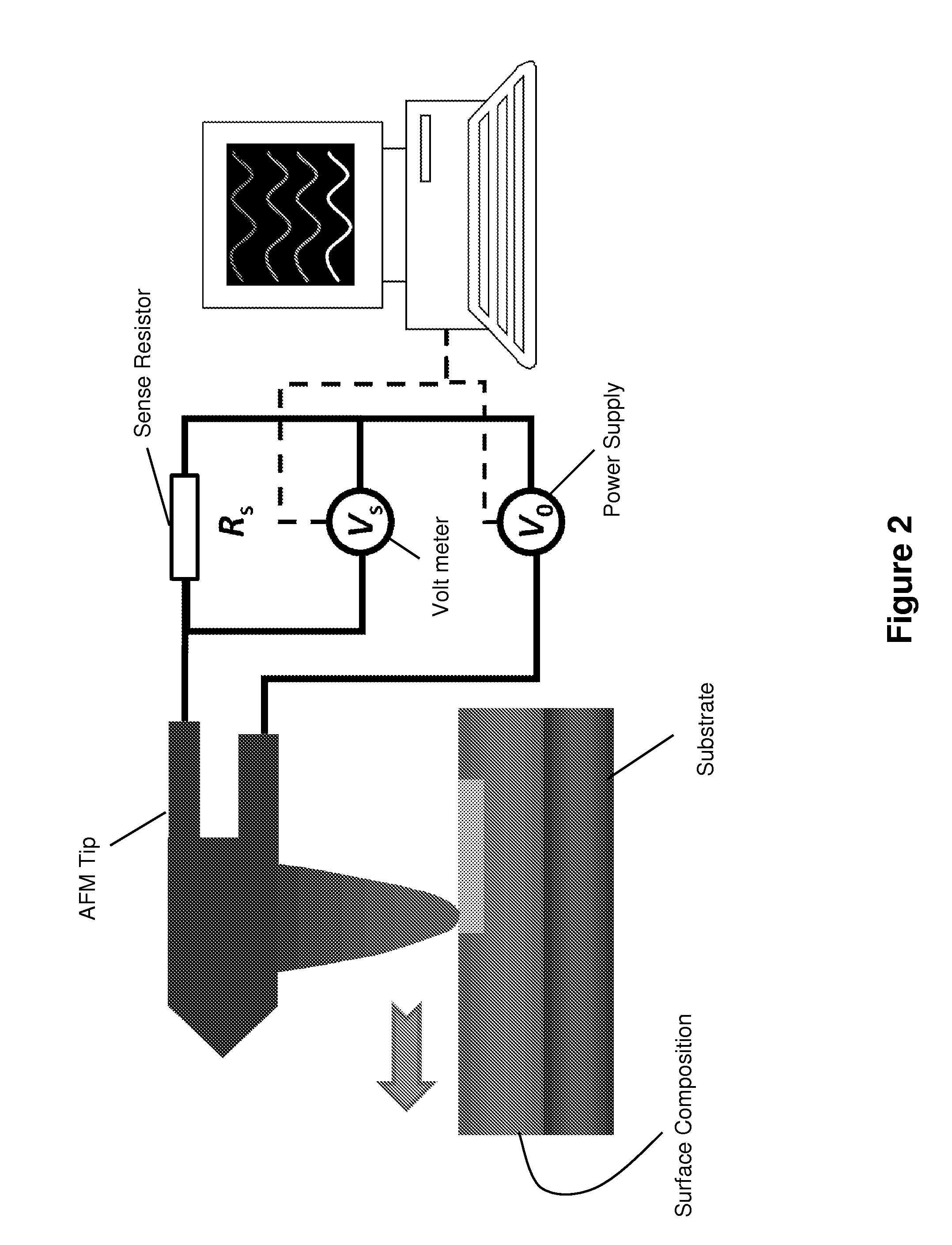Thermochemical nanolithography components, systems, and methods
a technology of nanolithography and components, applied in the field of nanolithography, can solve the problems of increasing the cost of lithographic materials, etc., and achieves the effect of chemical patterning, patterning speed, and topographical change control
- Summary
- Abstract
- Description
- Claims
- Application Information
AI Technical Summary
Problems solved by technology
Method used
Image
Examples
example 1
Synthesis of Poly((tetrahydropyran-2-yl N-(2-methacryloxyethyl)carbamate)-co-(methyl 4-(3-methacryloyloxypropoxy)cinnamate)) Polymer
[0108]In this example; a new polymeric material, poly((tetrahydropyran-2-yl N-(2-methacryloxyethyl)carbamate)-co-(methyl 4-(3-methacryloyloxypropoxy)cinnamate)) was synthesized. This polymer had both a deprotecting group and a cross-linking group. The deprotecting group was the THP carbamate functionality, and the cross-linking group was the cinnamate functionality. The polymer has the following structure:
[0109]
[0110]The polymer in this example was prepared using the following chemicals for the synthesis: dihydropyran (Aldrich), 2-isocyanatoethyl methacrylate (Aldrich), azobisisobutyronitrile (Aldrich), allyl bromide (Aldrich), potassium carbonate (VWR), platinum on activated carbon (10 wt %, Strem Chemicals), 4-hydroxybenzophenone (Alfa Aesar), and chlorodimethyl silane (Alfa Aesar). All solvents were reagent grade. All chemicals were used as-received ...
example 2
TCNL of Multifunctional Templates for Assembling Nanoscale Objects
[0125]In this example, TCNL was used to thermally activate the deprotection of amine groups on a polymer surface in arbitrary nanoscale and microscale patterns at linear speeds of up to millimeters per second. The unmasked amine nanotemplates were then selectively and covalently functionalized to create patterns of thiols, maleimides, aldehydes or biotins in distinct areas of the polymer surface. The multiple functionalities of these patterns were exploited to create nanoarrays, with features as small as about 40 nm, of nanoscale objects such as bioactive proteins and DNA. By repeating the TCNL steps followed by different protocols for chemically converting the unprotected amines, it was possible to generate surfaces with orthogonal functionalities in distinct areas that were further functionalized at a later date. The bioactivity of the TCNL-designed protein arrays was confirmed by using fluorescent antibodies and a ...
example 3
Direct TCNL Patterning and Characterization of Poly(p-Phenylene Vinylene) Nanostructures
[0144]In this example, TCNL was used to prepare poly(p-phenylene vinylene) (PPV), which is a widely studied electroluminescent conjugated polymer. Direct writing of PPV by locally heating a sulfonium salt precursor was achieved with sub-100 nm spatial resolution in ambient conditions. The local thermochemical conversion was verified by Raman spectroscopy, fluorescence imaging, and atomic force microscopy. This convenient direct writing of conjugated polymer nanostructures could be desirable for the design and fabrication of future nanoelectronic, nanophotonic, and biosensing devices.
[0145]A solution of a sulfonium salt precursor, poly(p-xylene tetrahydrothiophenium chloride) (0.25 wt % in H2O, Aldrich), was drop cast on either glass slides or Si (111) wafers that had been immersed overnight in a piranha solution. The thermal conversion to PPV typically involves the elimination of both thiophene a...
PUM
| Property | Measurement | Unit |
|---|---|---|
| speed | aaaaa | aaaaa |
| moving speed | aaaaa | aaaaa |
| distance | aaaaa | aaaaa |
Abstract
Description
Claims
Application Information
 Login to view more
Login to view more - R&D Engineer
- R&D Manager
- IP Professional
- Industry Leading Data Capabilities
- Powerful AI technology
- Patent DNA Extraction
Browse by: Latest US Patents, China's latest patents, Technical Efficacy Thesaurus, Application Domain, Technology Topic.
© 2024 PatSnap. All rights reserved.Legal|Privacy policy|Modern Slavery Act Transparency Statement|Sitemap



